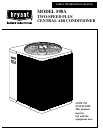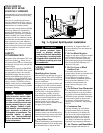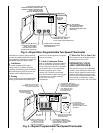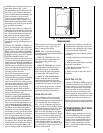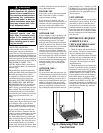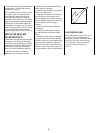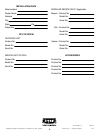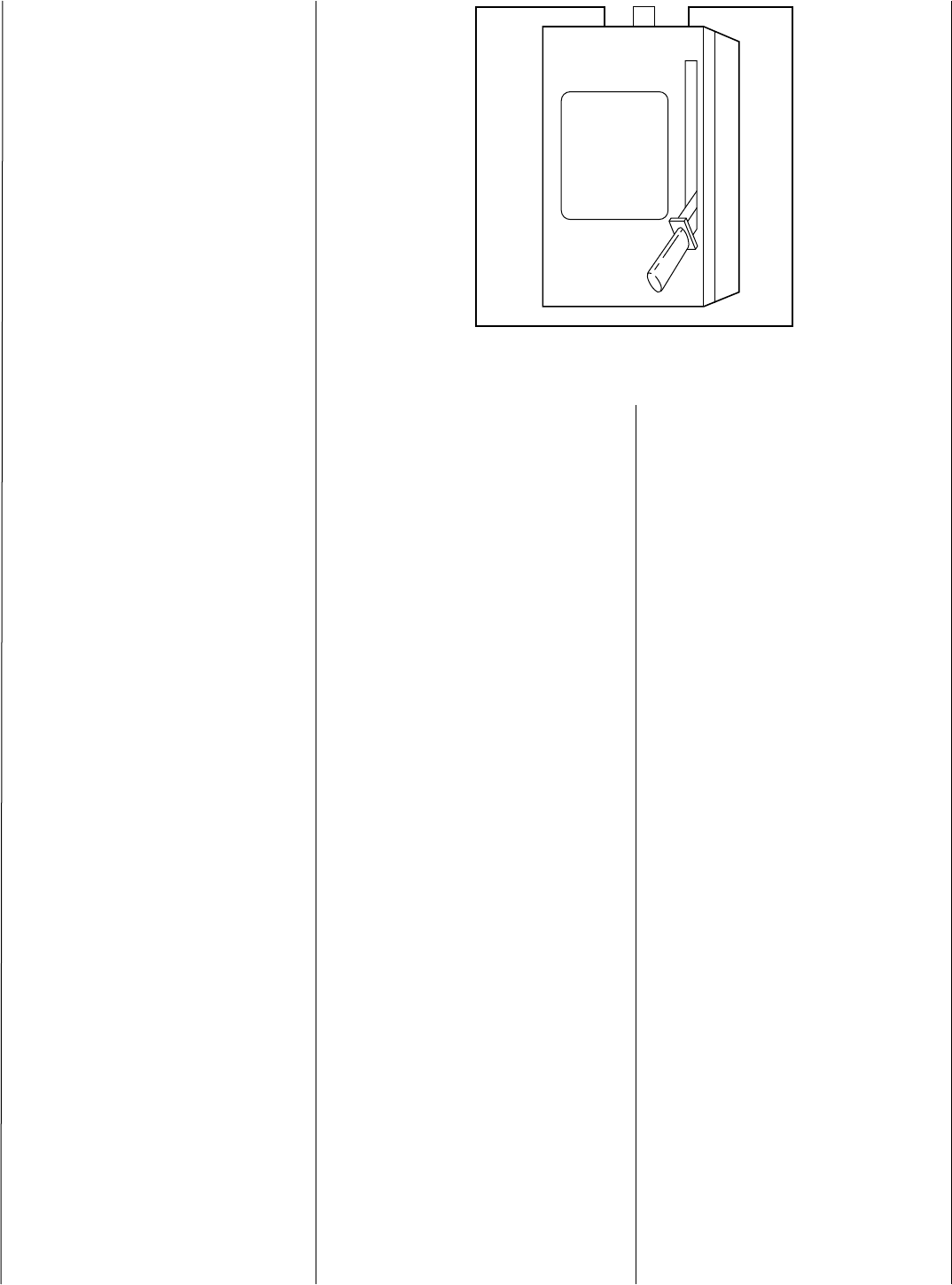
4
or MODE control. Thermostats may vary
from those shown in Fig. 2 and 3.
The temperature control selector can be a
dial, lever, or set of buttons that allows
you to establish the temperature that you
wish to maintain for your personal
comfort. Some thermostats possess
two temperature control selectors: one
for setting the temperature desired during
the cooling cycle, and one to set the heat-
ing operation temperature.
The FAN control offers two options for
controlling the indoor blower; AUTO and
ON. When set to AUTO, the blower will
run only while the thermostat operates
the cooling or heating section. When
the FAN control is set to ON, the blower
will run continuously—regardless of
whether the cooling or heating section is
operating.
Typically, the SYSTEM or MODE con-
trol on your thermostat offers the follow-
ing selections; COOL, OFF, AUTO and
HEAT. Neither the cooling nor heating
section will operate when the SYSTEM
or MODE control is set to OFF. With the
SYSTEM or MODE control set to
COOL, the cooling section of your com-
fort system will operate when the indoor
temperature rises above the level that you
wish to maintain. With the SYSTEM or
MODE control set to HEAT, the heating
section will operate automatically when
the indoor temperature falls below the
level that you have selected.
The AUTO selection found on some
thermostats provides for automatic
changeover between cooling and heating
cycles. With the SYSTEM or MODE
control set to AUTO, the cooling section
will operate when the indoor temperature
rises above the thermostat cooling
temperature setting, or the heating
section will operate when the indoor
temperature drops below the thermostat
setting for the heating cycle.
Your thermostat may be PROGRAM-
MABLE or NON-PROGRAMMABLE.
A NON-PROGRAMMABLE thermo-
stat does not allow the temperature set-
tings to be varied throughout the day or
week without physically changing the
settings. A PROGRAMMABLE thermo-
stat allows various daily temperature
changes to be preset. During the winter
for example, you may wish to set back the
temperature of your home at night, then
have the temperature return to normal
prior to waking up. The home’s tempera-
ture can then be lowered again during the
day when no one is at home, but again be
at peak comfort level when your family
returns home. During the summer, the
opposite changes might be programmed.
When properly used, the programming
can result in energy savings on your
home’s heating and cooling.
NOTE:
Your 2-speed air conditioning
system has several special features built in
to protect the unit.
•
5-MINUTE TIME DELAY—Unit
will delay operation upon initial start-
up or short-cycling of the indoor
thermostat.
•
1-MINUTE TIME DELAY—When
changing speeds from low to high, or
high to low, there is a 1-minute time
delay. During the speed change delay,
the outdoor fan will continue to run.
•
2-MINUTE LOW-SPEED MINI-
MUM—If the unit has not operated
within the past 30 minutes, upon the
next cooling demand, it will operate for
a minimum of 2 minutes on low speed.
If you wish to program your accessory
electronic indoor thermostat, refer to
thermostat Installation Instructions.
COOLING CYCLE
When operating in the cooling cycle,
your air conditioner will run until the
indoor temperature is lowered to the level
you have selected. On extremely hot
days, your air conditioner will run for
longer periods at a time and have shorter
off periods than on moderate days. Your
2-speed air conditioner spends about
80% of its time operating in low speed.
This means that it will operate for longer
periods of time than a single-speed air
conditioner even on moderate days. This
longer operational time in low speed
results in higher efficiency operation,
lower operating noise, and better humid-
ity control than a single-speed air con-
ditioner could achieve.
The following conditions typically add
extra heat and/or humidity to your home
and make your cooling unit work longer
to keep your home comfortable:
•
Entrance doors are frequently opened
and closed.
•
Laundry appliances are being operated.
•
A shower is running.
•
More than the usual number of people
are present in the home.
•
More than the normal number of
electric lights are in use.
•
Drapes are open on the sunny side of
the home.
HEATING CYCLE
With the SYSTEM or MODE control of
your indoor thermostat set to HEAT, the
heating section of your home comfort
system will operate until room temper-
ature is raised to the level you have se-
lected. Of course, the heating unit will
have to operate for longer periods to main-
tain a comfortable environment on cooler
days and nights than on moderate ones.
Refer to your furnace Owner's Manual for
specific information on heating operation.
PERFORMING ROUTINE
MAINTENANCE
With the proper maintenance and care,
your air conditioning unit will operate
economically and dependably. Main-
tenance can be accomplished easily by
referring to the following directions.
However, before performing mainte-
nance, consider these important safety
precautions below.
Fig. 4—Main Electrical
Disconnect
MAIN
ON
OFF



